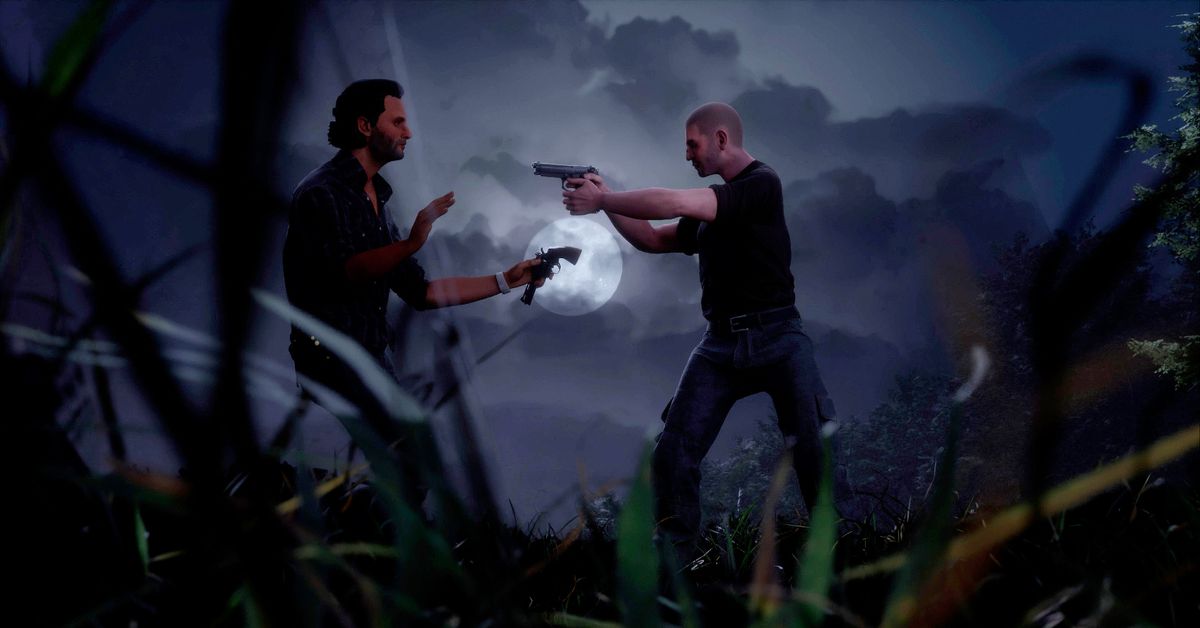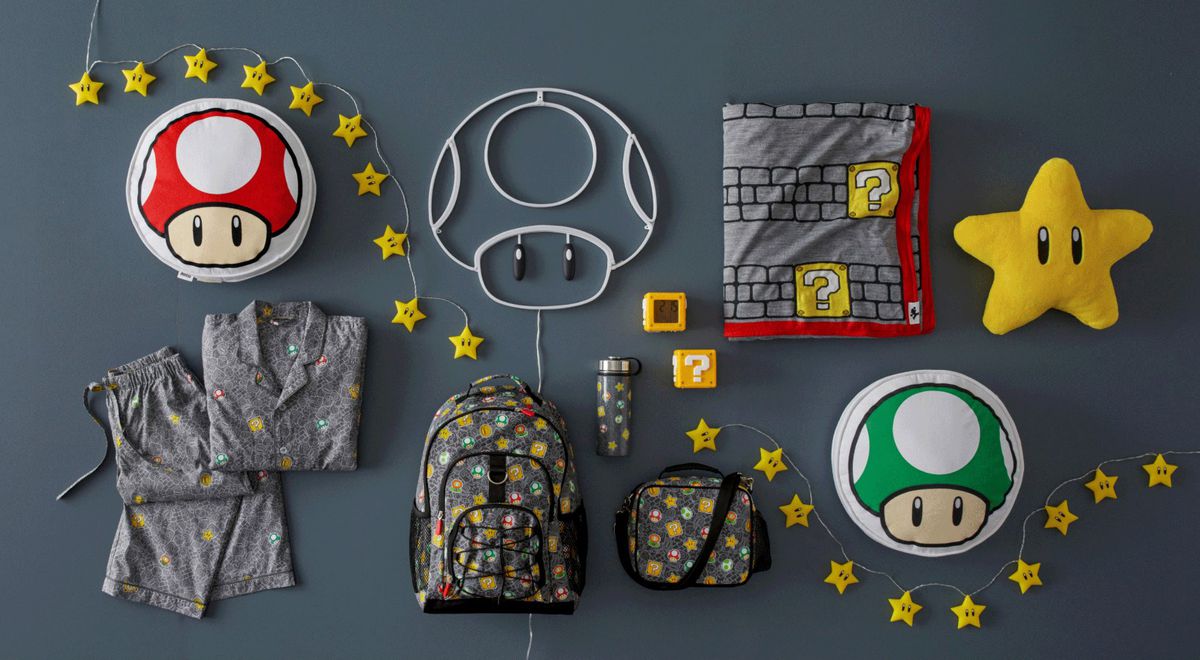For 20 years, Goro Abe has lived and breathed Wario, overseeing the development of thousands of microgames in the WarioWare series. In the creation of WarioWare: Move It! for Nintendo Switch, Abe helped whittle down more than a thousand ideas to ultimately deliver on 223 weird and wacky fresh microgames.
And while the platforms may change, and the way people interact with WarioWare games shifts from title to title, Abe says that the most important factors that make a good microgame haven’t changed since WarioWare, Inc.: Mega Party Game$! debuted on Game Boy Advance in 2003. “Microgame controls and rules should be intuitive, where any player can instantly grasp how they work,” Abe says. He still expects people to fail them on their first try, though. Those microgames, Abe adds, should also “make sense to as wide a range of ages and audiences as possible.”
Polygon recently interviewed Abe via email to discuss his work on WarioWare: Move It!, and his work as co-director, gameplay designer, and programmer on the WarioWare series. He discusses what still excites him about making microgames for two decades — spoiler: “games where you move your butt” is one of them — and the long-term effects of WarioWare microgame development on the human brain.
You can read our full, translated interview below.
Polygon: What were the team’s most important goals in making a new WarioWare game built for Nintendo Switch?
Goro Abe: The initial concept was to combine elements of a party game like WarioWare, Inc.: Mega Party Game$! and a more movement-based game like WarioWare: Smooth Moves into a motion control WarioWare party game for the Nintendo Switch system.
As we developed the game, we wanted to make the poses during gameplay silly-looking, so that people watching can have fun too. The chicken form (Ba-KAW) and the microgame you beat by just waving and wiggling your arms (“Seaweedy”) are good examples of that. While there are some co-op microgames where two players can play at the same time during Story Mode, we mostly went with turn-based games because we thought having an audience made it more fun.
:no_upscale()/cdn.vox-cdn.com/uploads/chorus_asset/file/25176968/Switch_WWMoveIt_SCRN_01__3_.jpg)
Additionally, the party games were designed to make the process of winning or losing fun, not just the winning or losing itself. One example is “Galactic Conquest,” where the player who wins the battle game gets to roll the dice, but then all kinds of mishaps happen based on the space they land on. There are many scenes where the player who lost the battle game gets the last laugh because the winner lands on a space that forces them to start over or share their points. We tried to make it so people who aren’t skilled gamers can still enjoy this title all the way to the end.
Ultimately, I think we managed to achieve our initial goal of making a movement-based WarioWare party game for Nintendo Switch.
How did the development of WarioWare: Move It! differ from previous WarioWare games?
For starters, the development framework was different. Intelligent Systems and Nintendo came up with the initial idea, but when we got to the point of actually making the microgames, we collaborated with additional development companies. Initially, there were differences in company cultures and some variances in quality, but we got it closer and closer to perfection through conscientious communication and balance tweaks. I think that ultimately, the mix of different staff backgrounds and cultures resulted in more variety in the microgames compared to any previous game in the series.
And since this is a movement-based game, there are a lot of microgames that let the player move freely based on their own perspective, which required us to work on a lot of 3D graphics. Also, the programming for handling Joy-Con input was complex and needed a lot of tweaking. Based on all that, I feel that the effort required to create a single microgame was more intense than any other title in series history.
What do you think makes a great WarioWare microgame? Has your opinion of what makes a great microgame changed over the past 20 years?
There are many factors, but I think the following are the most notable:
- Microgame controls and rules should be intuitive, where any player can instantly grasp how they work. For example, the balance we were aiming for was for players to be able to beat a game on the second or third try, even if they didn’t get it at first.
- The theme for each game should be unique and relatable. We carefully chose themes that would make sense to as wide a range of ages and audiences as possible.
None of these ideas have changed since we started 20 years ago, but what we watch out for changes depending on the characteristic of that game. I mentioned earlier how it was important for us to ensure the poses during gameplay were silly-looking. This is the focal point of WarioWare: Move It!
:no_upscale()/cdn.vox-cdn.com/uploads/chorus_asset/file/24971407/Switch_WarioWareMoveIt_scrn_05_png_jpgcopy.jpg)
And because it’s a movement-based game, we also focused on how the game responds to players. Our goal was to create a simulated experience so that players feel like they’d entered the game world. We did this by making the in-game characters’ movements directly correspond to the player movement, and adding vibrations and sounds in ways that felt natural.
After making thousands of WarioWare microgames, how does the team ensure it’s not repeating itself?
First, we brainstorm tons of ideas. WarioWare: Move It! has 223 microgames including the boss games, but we collected over 1,000 storyboarded ideas from our staff. That said, it is fine if some of the games have similar themes. This is a movement-based game, which means that even if a subject matter is the same as the first WarioWare game, the gameplay is brand-new.
Another big factor is that I personally select which games make the cut. I have many of the past WarioWare microgames stored in my head, so I can focus on prioritizing choosing new ideas. Even if there are some similarities to a previous game, we change things up so that it becomes a different game.
Again, you must have played so many WarioWare microgames — which recent ones have delighted or surprised you?
We got extremely excited when we realized we could use the Sumo Form to make games where you move your butt, like “Buttograph” and “Balloon Buster.”
:no_upscale()/cdn.vox-cdn.com/uploads/chorus_asset/file/24971983/Switch_WarioWare_Move_It_MediaPreviewBROLL_SCRN_02.jpeg)
Also, microgames that use the IR (infrared) sensor, like “Safe Snacker” and “Put a Lid on It,” felt new and refreshing. I initially thought it’d be hard to integrate the IR sensor into this game because you have to use both hands to hold the pair of Joy-Con controllers, but then we managed to do it by letting the left Joy-Con hang from the wrist strap. I think this particular way of solving problems like this is unique to the WarioWare series.
Another microgame I wasn’t initially sold on at the idea stage was “Chow Down,” but once it was completed, I was delighted to see that it actually matched the player’s mouth movements.
WarioWare games happen so fast, and at such a rapid pace — does this ever start to affect how you think about games? (Or life?)
I’ve been spent so long focusing on ways to make a game more intuitive, that I’ve become acutely attuned to how easy a game is to understand. Even when I play other games, I subconsciously start thinking what about the game was easy to understand, what was hard to understand, and what could be done to make it easier to understand.
And lately, I’ve been picking up on the intuitiveness of things, not just in games, but in various things we encounter on a daily basis like user interfaces and visual effects.
How do you approach making 9-Volt’s games specifically, and adapting Nintendo’s game history into microgame form?
First, we made a list of past Nintendo games and brainstormed as many ideas as we could which could be turned into a movement-based microgame. We then went through and selected evenly across the list so that no single title or system was favored.
However, for more recent titles, it is very labor-intensive just to reproduce it, even for a short microgame. We took the reproduction method into account as we selected the titles and their specifications.
:no_upscale()/cdn.vox-cdn.com/uploads/chorus_asset/file/25176985/Switch_WWMoveIt_SCRN_15.jpg)
Once we had a pretty solid idea of what to make, we reached out to the various developers of each game who provided us with assets and guidance. Creating microgames at this stage is made possible by contributions from a lot of different people.
What was the inspiration behind Wario’s island vacation?
For WarioWare: Move It!, we needed to teach players about Joy-Con poses (Forms) before they start playing the microgames. In WarioWare: Smooth Moves, we did that via Forms found in ancient ruins. We wanted to adapt a similar introduction for this game, where there is some sort of legend that has been passed down.
But if we set the story in Diamond City where Wario lives, it would have been the same as WarioWare: Smooth Moves. We brainstormed ideas for a different and more suitable setting and ultimately landed on a tropical resort. It made sense that a tropical island had its own unique culture and legends, and we’d get to show a different side of Wario and company outside of their regular setting. Since they are all going to a tropical island, we thought the idea of a company trip would be easy to understand, so that is how this story was born.








